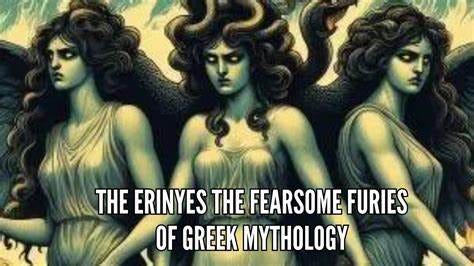Anger in psychohistorical perspective, Part I
How one of our most powerful emotions can play either a beneficial or a destructive role in personal life and in history.
The Problem of Anger
It’s a safe bet that you know someone with the tendency to escalate or explode with too much anger. It may be your husband or wife, or partner, your boyfriend or girlfriend, or someone in your family. It may even, to some degree, be you. You've surely seen numerous news stories about celebrities or athletes who (if you excuse the expression I learned from a few guys in my past anger management groups) tend to “lose their shit.” 1 They explode in anger inappropriately or excessively, raise their voices, clench their fists, call people names, use language to abuse, or lash out physically - in general making spectacles of themselves. When exploders explode, sometimes jobs are lost, marital engagements end and marriages themselves, family dinners are ruined, and if the uncontrolled anger is acted out in violence, there can be domestic violence with all its unfortunate consequences. It has been said that “a moment of anger can bring a lifetime of regret.”
Anger Management
Because this problem is so pervasive, something called “anger management” was invented. In our society, indications are that anger “mismanagement”is increasing in frequency. 2 Anger as we shall see, is a natural and necessary emotion. But when it becomes “dysfunctional” (the sarcastic retort from Dr. Phil comes to mind: “and how’s that workin for ya?”) “Anger management training” is the usual treatment of choice for this malady (though it’s often entered into as the result of a partner ultimatum or a court mandate). For some therapists who run groups, it can also be a lucrative variant of their psychotherapeutic practice.
Helping tame the Furies of anger requires knowledge and skill, and can be done individually, but it is most effectively in groups. 3 Though not having an explosive anger tendency myself, I was able to teach effective techniques to calm the storms of rage starting during my clinical psych internship and for almost a decade. I found it challenging but gratifying, because it most often brought positive results relatively quickly. It is especially healing for guys - my group were usually males though not always - to bond with other guys who have the same problem and who “get” what it’s like. 1 It was gratifying work, as quite often people can make some positive changes in short order, once they commit themselves to self- change.
The Dynamics of Anger
For this to happen, the easily angered person must come to understand what we can call “the dynamics of anger,” what role it plays in life, how to head off problematic anger and stop it, and how to express anger in a constructive, rather than a destructive way. Effective treatment entails not just learning cognitive techniques but teaching how to tolerate emotional discomfort - what is called “affect regulation”- and expand the range of emotions that a person is aware of and can express and process. Often this involves helping someone bring to the surface that they ARE angry. “Processing” it means giving it meaning. Unformulated experience that has not been symbolically expressed and given meaning is the seedbed for “madness” both in the usual sense of “I am mad at you” but in the generic archaic sense, e.g the madness of kings or of crowds.

Let’s begin by examining what anger is, and what is its psychological function. Here are several simple truths:
Anger itself is built into our design as human beings. The insight that is necessary to make progress in understanding and “managing” our anger is to realize this - that anger is natural and it’s necessary. Without it we would be defenseless against threat and left passive in the face of frustration and being disrespected.
It’s a fool’s errand to try and eradicate or eliminate anger from the psyche. What is needed to tame the powerful force of anger is the capacity to process emotion and give it meaning.
Anger provides energy and power. It is a way to marshal a response to a situation that seems or is unbearable. Rather than passive acceptance, it fuels or sparks action - action that can be constructive or destructive.
Constructive anger is when the action generated - which can be communication or physical activity - moves to non- violently resolve or remove the anger-making situation. The alchemy of healthy “anger management” is when the base metal of anger -the lead - is transmuted or transformed into the gold of assertiveness, that brings beneficial results and does no harm.
Aristotle in his Nicomachean Ethics summed it up in this way:
To be angry is easy. But to be angry with the right person, to the right extent, at the right time, with the right motive, and in the right way — that is not for everyone, nor is it easy; wherefore goodness is both rare and laudable and noble.”
“Healthy Anger” - Getting in touch with your anger = integrating it and processing your emotions
The essence of the healthy processing of anger - and keep in mind that we all are sometimes angry, and it is “human, all too human,” (one of Nietzsche’s favorite phrases) - is being aware of, and in touch with one’s emotions. This awareness then gives us choices. Sometimes a small and short expression of anger can be salutary both for preventing irritation and annoyance to build up, and/or to communicate to a partner or someone that they have crossed a boundary line and “gone too far” this time. Anger then motivates us to maintain needed personal boundaries.
According to the insightful and useful self-help book, Make Anger Your Ally by Neil Clark Warren, what’s most beneficial is to no longer see anger as your enemy, as “other” - fueling a negative self-image that one is a bad person, assuming lack of control (“the devil made me do it'“), but rather to take ownership and integrate it into the whole self. It coincides with the now popular psychotherapy approach known as “internal family systems” theory developed by Richard Schwartz. 4 Schwartz argues that traumatized people -one might say perhaps this category of “traumatized” would even include almost all people- have “parts” that emerge when they are triggered. 5 In many cases, these parts can be furious and rageful “sub-personalities” that were constructed or forged in childhood or early experience, to defend against the unbearable experience of trauma. The way forward is not to demonize or fruitlessly fight against these parts, but Schwartz says, to accept and make friends of them and thereby integrate them into the large self of the individual person.
Phonesis or “practical wisdom”
With an awareness of the traumas in our earlier life we can be more “artful” and have the practical wisdom (phronesis) of - to mix a few metaphors - picking ones’s battles, going with the flow, and knowing, as Kenny Rogers once advised, “when to hold ‘em, and when to fold ‘em.”
Ancient Greek philosophy had a lot to say about anger. It extolled the “golden mean” and the importance of avoiding the extremes. Aristotle taught regarding all human emotions and traits, that it’s a danger to have too little or too much, and the key is - just enough. In what we can call Aristotle’s Goldilock’s solution, all extreme emotions are undesirable, and this includes anger. Even a trait (though it’s not exactly an emotion) like courage needs moderation. Too little courage, of course, is cowardice. But too much is to be foolhardy and reckless. The same goes for anger, as his profound quote above points out.
Rather than moralistically condemning anger, Aristotle’s approach was that we should pursue the good life, which is an ethical life. Ethics for Aristotle was not about following rules, but more a matter of building character, which is the gaining in knowledge of and the ability to do the best in every situation. Being able to make the best or most good choice in a difficult situation was what he called practical wisdom - phronesis. 6
This is a useful approach to apply to “anger management.” The goal is not to neuter people and tell them that they should never be angry. It’s more to teach them how to be a wise shepard of their emotions, one of which is anger. This insight is contained in the common Stoic saying he who is not master of their emotions is their slave. So, control your anger, lest it control you!
Becoming aware
Effective psychotherapy for someone who has difficulties with handling intense emotions including anger, involves getting a person to become aware of what they are feeling at any given time, and discovering what one’s weaknesses or trigger points are. Good anger management means becoming psychologically “awake” and alert so not to be lulled to follow habits that breed or exacerbate anger, and, to borrow a metaphor from the Wild West, heading off anger attacks “at the pass.”
With interpersonal relations, when conflict arises, poor anger management manifests in irritability, acting out with verbal abuse or physical force, sullenness or withholding, even cheating on a partner. Being passive- aggressive is another way of mismanaging anger; expressing anger indirectly and manipulatively and not owning it. We often use the expression, a person was “besides themself with anger.” Not being able to discuss issues with a partner when one is flooded with too much anger or repressed anger can also be a huge obstacle in the way of having a healthy relationship.
The four ways to mismanage anger
We are all familiar with the anger exploder. But there are three other ways to mismanage anger, ways that can be called implosion rather than explosion: 1) is for the anger to be turned inward against oneself and generate depression. This is what Freudians have always pointed out- depression is anger turned inward. The commong expression “don’t beat yourself up about it” points to the tendency we might have to have a reaction to a decision that turned out badly and turn it against ourselves. The 2nd way to mismanage anger is to somatize. Somatization (e.g. body symptoms, and excessive or exacerbation of illness,) can be seen to be unprocessed or repressed anger. And for a 3rd additional category of anger mismanagement, there is what could be called “sideways anger” - the ““under-cutter” - where anger rather than being projected outward explosively, goes sideways, insidiously and continuously is spread around and seeps or spews out - distilled into resentfulness and “passive aggression” or slung with undercutting sarcasm, the exuding of negativity, or gossiping.
Spiritual resources
My classes in anger management always included not only the cognitive behavioral approach (learn what your automatic dysfunctional thoughts are and change them) but attention to religion and spirituality and the philosophy. The philosophy inspiring and behind cog B, is Greek and Roman Stoicism.
Epictetus - “What bothers people are not the events in their lives themselves, but their notions about them.”
The Stoics
Stoicism has aptly been described as a philosophy to help us “not being driven crazy in a crazy world.” 7 It is based on the recognition that we very often don’t have control over what affects us but we do have control of how we think of what affects us. But there are limits to the value of stoicism in helping us with the tremendously powerful force of anger. Changing our automatic thoughts (“cognitive restructuring”) is a good start, but it’s almost always not enough. Stoicism teaches us to manage anger. It doesn’t delve into its roots or sources, which is a person’s deep inner convictions and emotional makeup.
Religion and spirituality
This is why I always included in my anger, management classes or groups an exploration of the spiritual and religious resources that exist that can help with containing anger. Anger is so powerful a force and sometimes so intractable a problem, that what is needed is something that is equally powerful and goes beyond merely changing our “thinking.”
It’s commonly overlooked that’s the founding texts and scriptures of the Abrahamic religions - Judaism, Islam and Christianity - in various degrees, have a lot to say about anger and how we should live our lives. My knowledge of Islam and the Koran is unfortunately extremely limited, but in the Koran, Muslims are exhorted to live moderate lives and be merciful like Allah. The God of what Christians called the Old Testament has often been described as an angry God, but the narrative also emphasizes Jahweh’s forbearance and mercy. Biblical stories, it has been pointed out, are not otherworldly (for the most part), but describe human life in the raw, with all its conflict and emotions (that’s why with the GOP conservatives wanting to ban books from school libraries, it’s been suggested that the Bible itself should be banned because if its several shocking scenes.) Once man is evicted from the Garden of Eden, there’s the story of Cain and Abel. This story of conflict rooted in envy and sibling rivalry shows the dangers of intense anger and how it can even result in murder. And finally in the Christian gospels, Jesus is the peacemaker who urges forgiveness and turning the other cheek. Yet Jesus expresses great anger at the tax collector’s corruption of the temple, and symbolically overturns their tables, on behalf of justice, to strongly protest a defilement of the House of the Lord.
Once critical thinking is applied, we can appreciate that, in their essence, the founding texts of especially Judaism and Christianity as well as Islam, have a humanistic foundation and focus and can symbolically offer us wisdom regarding anger. 9
The insights of Asian spirituality also have much to teach us about anger. For Buddha and the Dalai Llama, anger is a destructive emotion which must not be allowed to take root in our psyches.
The last season of the brilliantly done and popular HBO series White Lotus had as one theme the complexities of anger as part of the human condition. Without being a plot spoiler, if you haven’t seen it yet, suffice it to say that a major protagonist (Rick) carries in his heart a deep anger and thirst for revenge rooted in the past that beccomes deeply problematic.
Mike Clark in White Lotus offers for our consideration the wisdom of a Theravada Buddhist monk, who tells listening Westerners that
Violence, aggression, anger stem from same source. Fear. The only good faith response is to sit with your feelings.
Violence, Buddhists remind us, does spiritual harm to both victim and to perpetrator. Anger, in this perspective, is seen as a manifestation of the ego, clinging desperately to arbitrary expectations, fruitlessly trying stop the flux and flow of reality. 10
Conclusion
Anger in history goes back a long way, to history’s beginnings. Freud wrote that the caveman who first cursed instead of throwing a stone or spear, took a first step toward civilization. In the modern era, psychology and psychoanalysis emerged as a science and a method in the 19th century to allow us to understand human psychology, and the role of anger within it. We've reviewed some useful psychological and psychoanalytic ideas than can illuminate anger, and its role within interpersonal life.
In an upcoming Part 2 of this article on anger in history we will examine the historical record more closely and how anger expression has changed through the ages, then further examine how anger can be channeled and transformed into either destruction or positive and constructive social action - and the role of leaders in making this happen.
In sum - when something occurs collectively that makes people angry in general, it can be a great motivator, though usually for the worst. Anger is an energy that can provide the power and motivation to act to change things for the better. It can also fester into hatred and resentment, and be the seed ground for extremism and fanaticism, as we have seen so much in the last 50 years and is so much apparent today. As a species, the choice - between Eros (love) and Thanatos (hatred and the impulse to destroy) -is ours to make.
Your comments and/or questions are welcome!
______
Notes
1) In my experience, most of the individuals who came to my anger groups for help were males. The females who did appear seemed to probably have Axis I (acute) diagnoses, whereas the men were more typical guys who were simply “intense,” with perhaps high testosterone levels.
2 ) According to a DeepSeek search:
“AAA Foundation for Traffic Safety: ** Their annual surveys consistently show a *perceived* increase in aggressive driving. Their 2019 survey found nearly 80% of drivers expressed significant anger or aggression behind the wheel at least once in the past year. More critically, behaviors like yelling, honking angrily, making angry gestures, tailgating, and blocking others from changing lanes were reported frequently.
*NHTSA Data: * While not solely measuring "anger," data shows increases in risky driving behaviors linked to aggression (e.g., speeding, impaired driving fatalities surged during/post-pandemic).”
3) See Irwin Yalom’s definitive study, The Theory and Practice of Group Psychotherapy on why the group process can be so effective for behavioral change.
4) Richard Schwartz, Introduction to Internal Family Systems and No Bad Parts.
5) There is now a vast literature on the psychology of trauma. For a good overview, see Healing Trauma: Attachment, Mind, Body and Brain, by Daniel J. Siegel, M.D., and Marion Solomon, Ph.D. See also the works of Robert Stolorow. Here is an interview:
https://www.psychologytoday.com/us/blog/rethinking-mental-health/201602/robert-stolorow-emotional-trauma-and-psychoanalysis
6) See Barry Schwartz and Kenneth Sharpe, Practical Wisdom.
7) The philosophy of Stoicism in the last 10 years has become immensely popular. For an overview see:
How to Be a Stoic - The New York Times
https://archive.nytimes.com/opinionator.blogs.nytimes.com/2015/02/02/how-to-be-a-stoic/
One can’t do much better than go directly to the originals and read Epictetus or Seneca. Seneca is quite readable and his essay “On Anger” is a classic.
8) Highly recommended is Peter Gomes. The Good Book: Reading the Bible with Mind and Heart. Gomes makes the point the Bible has been expropriated and co-opted -and greatly distorted - by the far right. Instead, it can serve as an inspiration as it always has (e.g. M.L King, Jr., Bishop Budde and Pope Francis, and we hope, with Pope Leo) for humanistic values and social justice.
9) Mike White as a child was born into an authoritarian Christian right family and church. He (and his pastor father) broke away from this and in his work has shown what can be called an existentialist spirit, in search of meaning and authenticity. For an excellent introduction to how Buddhism can be applied to our subject and in everyday life see: Thich Nhat Hanh, Anger: Wisdom for Cooling the Flames, and You are Here.






